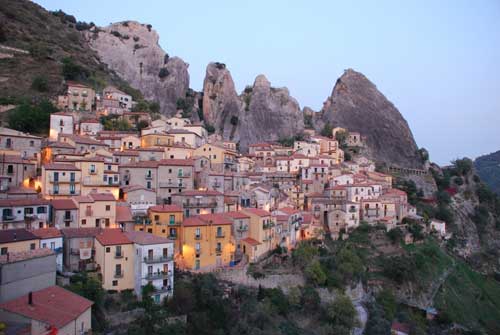
By Judy Pinegar
Basilicata, in southern Italy, is a region whose name crops up only in wine circles. It is home to just four Denominazione di Origine Controllata DOC’s, (certified growing areas) which collectively cover only two bottles in every hundred produced here.
Winemaking in Basilicata dates back over a thousand years. While in central and northern Italy it was the Etruscans and Romans who pioneered local winemaking, in the south this task was largely undertaken by seafaring Greeks. Basilicata was also influenced by the Byzantines, who ruled the area during two distinct periods in both the 6th and 9th centuries and gave the region its current name. (from Greek basilikos, meaning prince and governor).
It was during the Middle Ages that Aglianico (then known as Ellenico) took its place as the leading wine grape variety – although recent theories lean towards the introduction of the grape (known as vino de llanos, or wine of the plains) under Aragonese rule in the late Middle Ages.
Compared to the rest of Italy, the total wine production in Basilicata is very small; less than 500,000 hectoliters, of which only 3% comes under the DOC designation. The main area for viticulture lies in the heart of the fertile Vulture Massif in the north, located around extinct volcano of Mount Vulture on volcanic soils.
Although the mountainous terrain and harsh weather makes vine-growing a challenge, this area still enjoys an abundance of sunshine throughout the growing season and cool temperatures around harvest, thanks to the mild currents from the Tyrrhenian Sea to the west. In this hilly territory the local variety, Alianico del Vulture, reigns, producing quality wines which exhibit fine aromas and flavors.
There are some very pleasant examples of Moscato, and some superb Malivasia, the best of which come the Vulture zone and the eastern Bradano Valley. Primitivo, Sangiove and Montepulciano also do particularly well, as does Bombino Nero.
The Aglianico del Vulture wine, but expands further afield to the plains of Materia where it is used in Vino da Tavola wines.
Judy is a retired education administrator and dietitian, now enjoying writing for a living, who lives in Loomis, California, where she grows fruits, vegetable and grapes and makes award winning home wine.
Error: Contact form not found.